A geometric interpretation of the covariance matrix
A geometric interpretation of the covariance matrix
Contents [hide]
Introduction
In this article, we provide an intuitive, geometric interpretation of the covariance matrix, by exploring the relation between linear transformations and the resulting data covariance. Most textbooks explain the shape of data based on the concept of covariance matrices. Instead, we take a backwards approach and explain the concept of covariance matrices based on the shape of data.
In a previous article, we discussed the concept of variance, and provided a derivation and proof of the well known formula to estimate the sample variance. Figure 1 was used in this article to show that the standard deviation, as the square root of the variance, provides a measure of how much the data is spread across the feature space.
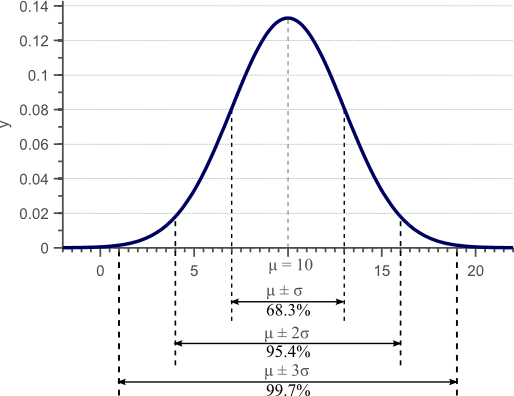
Figure 1. Gaussian density function. For normally distributed data, 68% of the samples fall within the interval defined by the mean plus and minus the standard deviation.
We showed that an unbiased estimator of the sample variance can be obtained by:
(1) 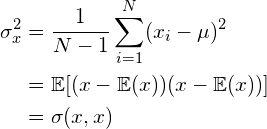
However, variance can only be used to explain the spread of the data in the directions parallel to the axes of the feature space. Consider the 2D feature space shown by figure 2:
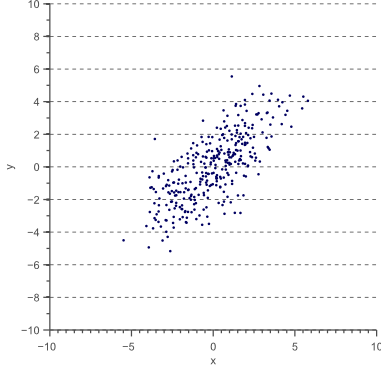
Figure 2. The diagnoal spread of the data is captured by the covariance.
For this data, we could calculate the variance  in the x-direction and the variance
in the x-direction and the variance  in the y-direction. However, the horizontal spread and the vertical spread of the data does not explain the clear diagonal correlation. Figure 2 clearly shows that on average, if the x-value of a data point increases, then also the y-value increases, resulting in a positive correlation. This correlation can be captured by extending the notion of variance to what is called the ‘covariance’ of the data:
in the y-direction. However, the horizontal spread and the vertical spread of the data does not explain the clear diagonal correlation. Figure 2 clearly shows that on average, if the x-value of a data point increases, then also the y-value increases, resulting in a positive correlation. This correlation can be captured by extending the notion of variance to what is called the ‘covariance’ of the data:
(2) 
For 2D data, we thus obtain  ,
,  ,
,  and
and  . These four values can be summarized in a matrix, called the covariance matrix:
. These four values can be summarized in a matrix, called the covariance matrix:
(3) 
If x is positively correlated with y, y is also positively correlated with x. In other words, we can state that  . Therefore, the covariance matrix is always a symmetric matrix with the variances on its diagonal and the covariances off-diagonal. Two-dimensional normally distributed data is explained completely by its mean and its
. Therefore, the covariance matrix is always a symmetric matrix with the variances on its diagonal and the covariances off-diagonal. Two-dimensional normally distributed data is explained completely by its mean and its  covariance matrix. Similarly, a
covariance matrix. Similarly, a  covariance matrix is used to capture the spread of three-dimensional data, and a
covariance matrix is used to capture the spread of three-dimensional data, and a  covariance matrix captures the spread of N-dimensional data.
covariance matrix captures the spread of N-dimensional data.
Figure 3 illustrates how the overall shape of the data defines the covariance matrix:
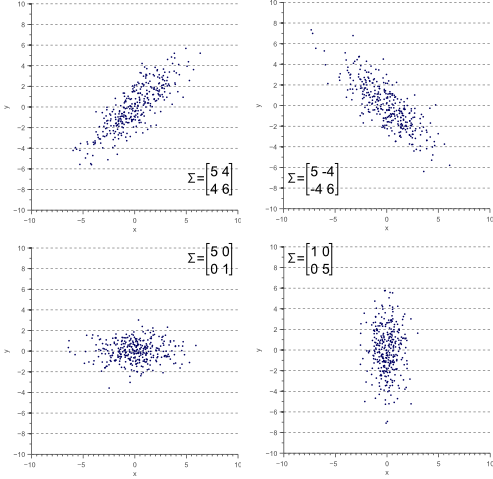
Figure 3. The covariance matrix defines the shape of the data. Diagonal spread is captured by the covariance, while axis-aligned spread is captured by the variance.
Eigendecomposition of a covariance matrix
In the next section, we will discuss how the covariance matrix can be interpreted as a linear operator that transforms white data into the data we observed. However, before diving into the technical details, it is important to gain an intuitive understanding of how eigenvectors and eigenvalues uniquely define the covariance matrix, and therefore the shape of our data.
As we saw in figure 3, the covariance matrix defines both the spread (variance), and the orientation (covariance) of our data. So, if we would like to represent the covariance matrix with a vector and its magnitude, we should simply try to find the vector that points into the direction of the largest spread of the data, and whose magnitude equals the spread (variance) in this direction.
If we define this vector as  , then the projection of our data
, then the projection of our data  onto this vector is obtained as
onto this vector is obtained as  , and the variance of the projected data is
, and the variance of the projected data is  . Since we are looking for the vector
. Since we are looking for the vector  that points into the direction of the largest variance, we should choose its components such that the covariance matrix
that points into the direction of the largest variance, we should choose its components such that the covariance matrix  of the projected data is as large as possible. Maximizing any function of the form
of the projected data is as large as possible. Maximizing any function of the form  with respect to
with respect to  , where
, where  is a normalized unit vector, can be formulated as a so called Rayleigh Quotient. The maximum of such a Rayleigh Quotient is obtained by setting
is a normalized unit vector, can be formulated as a so called Rayleigh Quotient. The maximum of such a Rayleigh Quotient is obtained by setting  equal to the largest eigenvector of matrix
equal to the largest eigenvector of matrix  .
.
In other words, the largest eigenvector of the covariance matrix always points into the direction of the largest variance of the data, and the magnitude of this vector equals the corresponding eigenvalue. The second largest eigenvector is always orthogonal to the largest eigenvector, and points into the direction of the second largest spread of the data.
Now let’s have a look at some examples. In an earlier article we saw that a linear transformation matrix  is completely defined by itseigenvectors and eigenvalues. Applied to the covariance matrix, this means that:
is completely defined by itseigenvectors and eigenvalues. Applied to the covariance matrix, this means that:
(4) 
where  is an eigenvector of
is an eigenvector of  , and
, and  is the corresponding eigenvalue.
is the corresponding eigenvalue.
If the covariance matrix of our data is a diagonal matrix, such that the covariances are zero, then this means that the variances must be equal to the eigenvalues  . This is illustrated by figure 4, where the eigenvectors are shown in green and magenta, and where the eigenvalues clearly equal the variance components of the covariance matrix.
. This is illustrated by figure 4, where the eigenvectors are shown in green and magenta, and where the eigenvalues clearly equal the variance components of the covariance matrix.
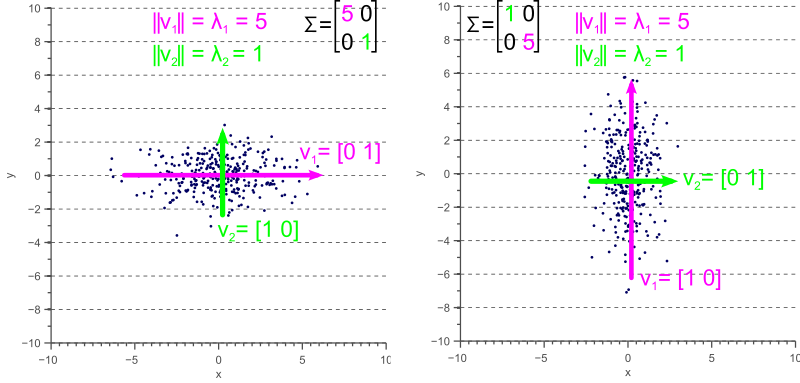
Figure 4. Eigenvectors of a covariance matrix
However, if the covariance matrix is not diagonal, such that the covariances are not zero, then the situation is a little more complicated. The eigenvalues still represent the variance magnitude in the direction of the largest spread of the data, and the variance components of the covariance matrix still represent the variance magnitude in the direction of the x-axis and y-axis. But since the data is not axis aligned, these values are not the same anymore as shown by figure 5.
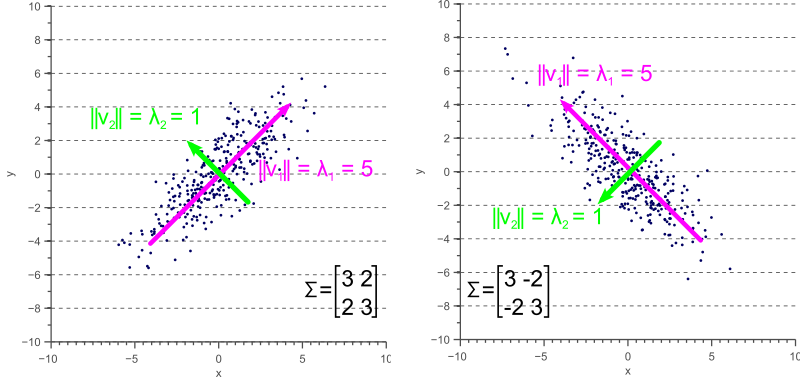
Figure 5. Eigenvalues versus variance
By comparing figure 5 with figure 4, it becomes clear that the eigenvalues represent the variance of the data along the eigenvector directions, whereas the variance components of the covariance matrix represent the spread along the axes. If there are no covariances, then both values are equal.
Covariance matrix as a linear transformation
Now let’s forget about covariance matrices for a moment. Each of the examples in figure 3 can simply be considered to be a linearly transformed instance of figure 6:
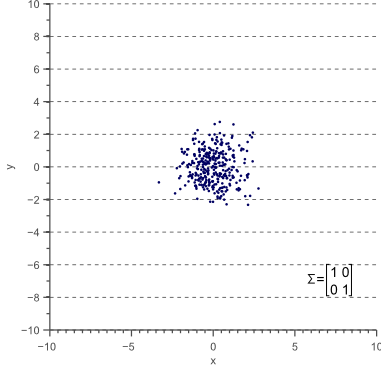
Figure 6. Data with unit covariance matrix is called white data.
Let the data shown by figure 6 be  , then each of the examples shown by figure 3 can be obtained by linearly transforming
, then each of the examples shown by figure 3 can be obtained by linearly transforming  :
:
(5) 
where  is a transformation matrix consisting of a rotation matrix
is a transformation matrix consisting of a rotation matrix  and a scaling matrix
and a scaling matrix  :
:
(6) 
These matrices are defined as:
(7) 
where  is the rotation angle, and:
is the rotation angle, and:
(8) 
where  and
and  are the scaling factors in the x direction and the y direction respectively.
are the scaling factors in the x direction and the y direction respectively.
In the following paragraphs, we will discuss the relation between the covariance matrix  , and the linear transformation matrix
, and the linear transformation matrix  .
.
Let’s start with unscaled (scale equals 1) and unrotated data. In statistics this is often refered to as ‘white data’ because its samples are drawn from a standard normal distribution and therefore correspond to white (uncorrelated) noise:

Figure 7. White data is data with a unit covariance matrix.
The covariance matrix of this ‘white’ data equals the identity matrix, such that the variances and standard deviations equal 1 and the covariance equals zero:
(9) 
Now let’s scale the data in the x-direction with a factor 4:
(10) 
The data  now looks as follows:
now looks as follows:
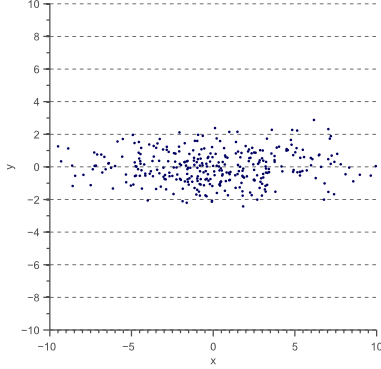
Figure 8. Variance in the x-direction results in a horizontal scaling.
The covariance matrix  of
of  is now:
is now:
(11) 
Thus, the covariance matrix  of the resulting data
of the resulting data  is related to the linear transformation
is related to the linear transformation  that is applied to the original data as follows:
that is applied to the original data as follows:  , where
, where
(12) 
However, although equation (12) holds when the data is scaled in the x and y direction, the question rises if it also holds when a rotation is applied. To investigate the relation between the linear transformation matrix  and the covariance matrix
and the covariance matrix  in the general case, we will therefore try to decompose the covariance matrix into the product of rotation and scaling matrices.
in the general case, we will therefore try to decompose the covariance matrix into the product of rotation and scaling matrices.
As we saw earlier, we can represent the covariance matrix by its eigenvectors and eigenvalues:
(13) 
where  is an eigenvector of
is an eigenvector of  , and
, and  is the corresponding eigenvalue.
is the corresponding eigenvalue.
Equation (13) holds for each eigenvector-eigenvalue pair of matrix  . In the 2D case, we obtain two eigenvectors and two eigenvalues. The system of two equations defined by equation (13) can be represented efficiently using matrix notation:
. In the 2D case, we obtain two eigenvectors and two eigenvalues. The system of two equations defined by equation (13) can be represented efficiently using matrix notation:
(14) 
where  is the matrix whose columns are the eigenvectors of
is the matrix whose columns are the eigenvectors of  and
and  is the diagonal matrix whose non-zero elements are the corresponding eigenvalues.
is the diagonal matrix whose non-zero elements are the corresponding eigenvalues.
This means that we can represent the covariance matrix as a function of its eigenvectors and eigenvalues:
(15) 
Equation (15) is called the eigendecomposition of the covariance matrix and can be obtained using a Singular Value Decompositionalgorithm. Whereas the eigenvectors represent the directions of the largest variance of the data, the eigenvalues represent the magnitude of this variance in those directions. In other words,  represents a rotation matrix, while
represents a rotation matrix, while  represents a scaling matrix. The covariance matrix can thus be decomposed further as:
represents a scaling matrix. The covariance matrix can thus be decomposed further as:
(16) 
where  is a rotation matrix and
is a rotation matrix and  is a scaling matrix.
is a scaling matrix.
In equation (6) we defined a linear transformation  . Since
. Since  is a diagonal scaling matrix,
is a diagonal scaling matrix,  . Furthermore, since
. Furthermore, since  is an orthogonal matrix,
is an orthogonal matrix,  . Therefore,
. Therefore,  . The covariance matrix can thus be written as:
. The covariance matrix can thus be written as:
(17) 
In other words, if we apply the linear transformation defined by  to the original white data
to the original white data  shown by figure 7, we obtain the rotated and scaled data
shown by figure 7, we obtain the rotated and scaled data  with covariance matrix
with covariance matrix  . This is illustrated by figure 10:
. This is illustrated by figure 10:
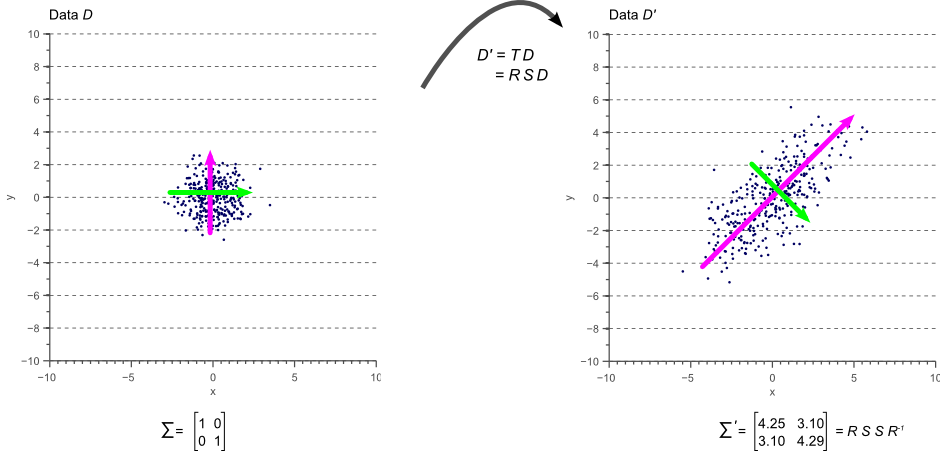
Figure 10. The covariance matrix represents a linear transformation of the original data.
The colored arrows in figure 10 represent the eigenvectors. The largest eigenvector, i.e. the eigenvector with the largest corresponding eigenvalue, always points in the direction of the largest variance of the data and thereby defines its orientation. Subsequent eigenvectors are always orthogonal to the largest eigenvector due to the orthogonality of rotation matrices.
Conclusion
In this article we showed that the covariance matrix of observed data is directly related to a linear transformation of white, uncorrelated data. This linear transformation is completely defined by the eigenvectors and eigenvalues of the data. While the eigenvectors represent the rotation matrix, the eigenvalues correspond to the square of the scaling factor in each dimension.
If you’re new to this blog, don’t forget to subscribe, or follow me on twitter!
A geometric interpretation of the covariance matrix的更多相关文章
- What is an eigenvector of a covariance matrix?
What is an eigenvector of a covariance matrix? One of the most intuitive explanations of eigenvector ...
- 方差variance, 协方差covariance, 协方差矩阵covariance matrix
https://www.jianshu.com/p/e1c8270477bc?utm_campaign=maleskine&utm_content=note&utm_medium=se ...
- 方差variance, 协方差covariance, 协方差矩阵covariance matrix | scatter matrix | weighted covariance | Eigenvalues and eigenvectors
covariance, co本能的想到双变量,用于描述两个变量之间的关系. correlation,相关性,covariance标准化后就是correlation. covariance的定义: 期望 ...
- covariance matrix 和数据分布情况估计
how to get data covariance matrix: http://stattrek.com/matrix-algebra/covariance-matrix.aspx meaning ...
- 图Lasso求逆协方差矩阵(Graphical Lasso for inverse covariance matrix)
图Lasso求逆协方差矩阵(Graphical Lasso for inverse covariance matrix) 作者:凯鲁嘎吉 - 博客园 http://www.cnblogs.com/ka ...
- 随机变量的方差variance & 随机向量的协方差矩阵covariance matrix
1.样本矩阵 如果是一个随机变量,那么它的样本值可以用一个向量表示.相对的,如果针对一个随机向量,那么就需要利用矩阵表示,因为向量中的每一个变量的采样值,都可以利用一个向量表示. 然后,一个矩阵可以利 ...
- A Beginner’s Guide to Eigenvectors, PCA, Covariance and Entropy
A Beginner’s Guide to Eigenvectors, PCA, Covariance and Entropy Content: Linear Transformations Prin ...
- Ill-conditioned covariance create
http://www.mathworks.com/matlabcentral/answers/100210-why-do-i-receive-an-error-while-trying-to-gene ...
- 协方差(Covariance)
统计学上用方差和标准差来度量数据的离散程度 ,但是方差和标准差是用来描述一维数据的(或者说是多维数据的一个维度),现实生活中我们常常会碰到多维数据,因此人们发明了协方差(covariance),用来度 ...
随机推荐
- Android之布局
Android中的布局分为六种,分别是相对布局.线性布局.表格布局.网格布局.帧布局.绝对布局,良好的布局设计对UI界面至关重要,下面先来看看先相对布局. 相对布局(RelativeLayout): ...
- Servlet之创建与配置
上篇已将介绍完了,下面来实践操作走一个: 首先在名为"com.caiduping"的包中创一个MyFilter的对象: 1 package com.caiduping; 2 3 i ...
- VR开发中性能问题—OculusWaitForGPU
http://blog.csdn.net/cartzhang/article/details/50788894 VR开发中性能问题-OculusWaitForGPU 本文章由cartzhang编写,转 ...
- 直接拿来用,最火的.NET开源项目(beta)
转自:http://blog.csdn.net/ltylove2007/article/details/18656971 综合类 微软企业库 微软官方出品,是为了协助开发商解决企业级应用开发过程中所面 ...
- Amoeba for MySQL MySql集群软件
一, Amoeba简述 Amoeba for MySQL致力于MySQL的分布式数据库前端代理层,它主要在应用层访问MySQL的时候充当query 路由功能,专注 分布式数据库 proxy 开发 ...
- 急缺【jQuery】人才,要求熟悉jQuery,熟悉Js,熟悉前端开发
是一份兼职 是与jQuery相关的写作任务,有写作兴趣的欢迎站短(有blog者优先). 要求就是熟悉js和jquery,项目经验丰富(项目经验一定要丰富). 钱不多,不到1W,如果月薪超过1W的,我想 ...
- iOS开发基础之排序
Objective-C 有排序的API,省了我们很多事. 主要有以下3种方法. NSComparator NSArray *unsortedArray = @[@5,@3,@8,@1,@7]; NSA ...
- SAP校园招聘笔试
一直就向往着SAP公司,终于,有幸今天参加了SAP校园招聘的笔试.下面我就来简单说说这个笔试的内容. 笔试分为两大部分,一部分是逻辑题,就是些什么阅读分析计算balabala的一堆,是全英文的.另外一 ...
- hadoop2-shell操作详解
- Media Queries——媒体类型
媒体类型(Media Type)在CSS2中是一个常见的属性,也是一个非常有用的属性,可以通过媒体类型对不同的设备指定不同的样式. 在CSS2中常碰到的就是all(全部).screen(屏幕).pri ...
